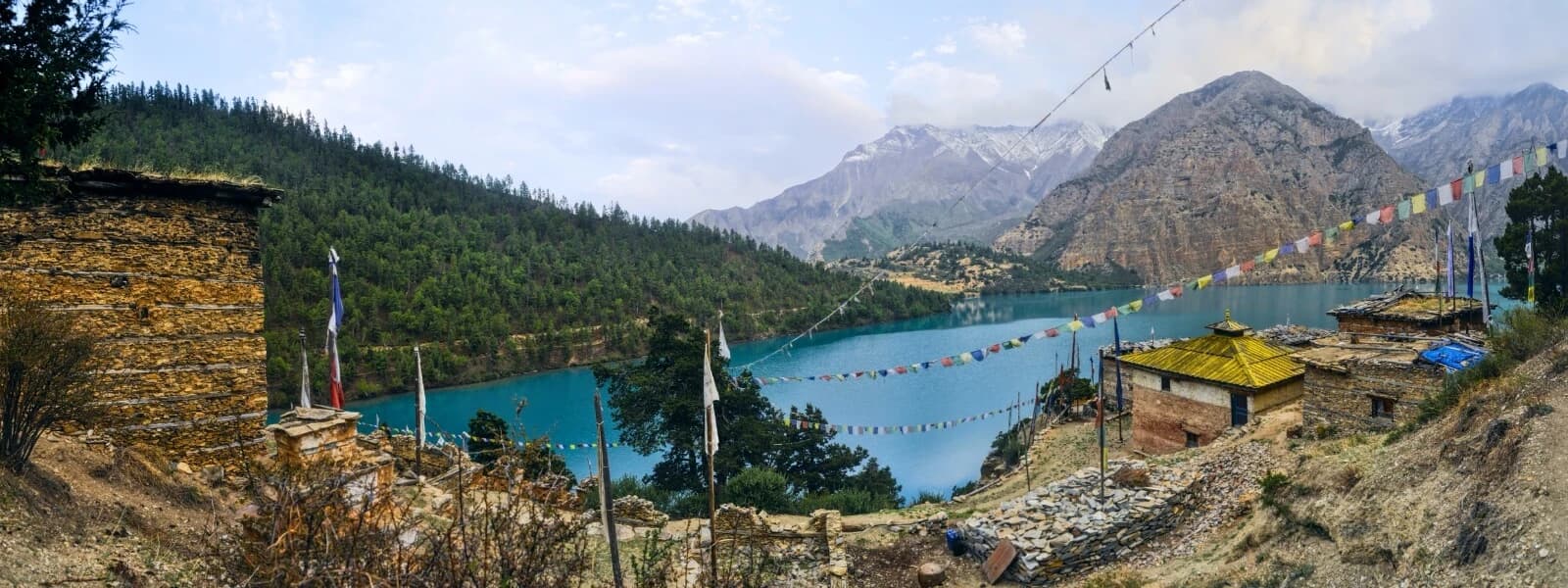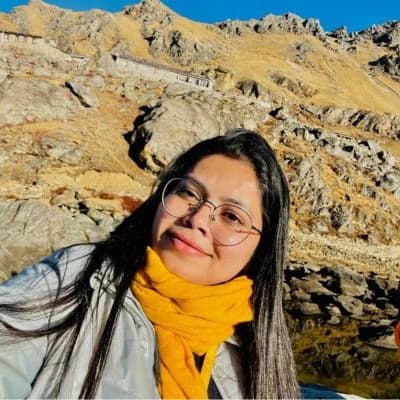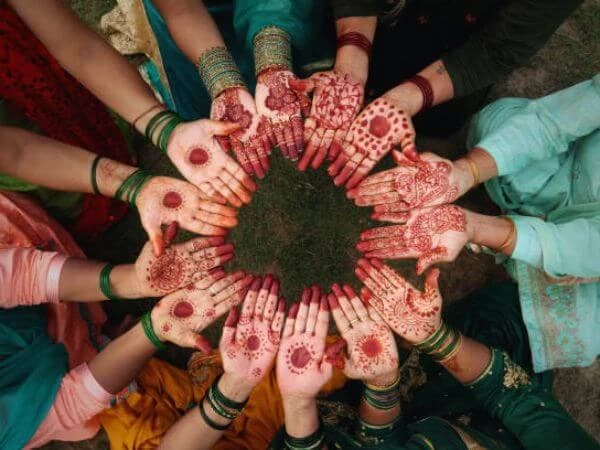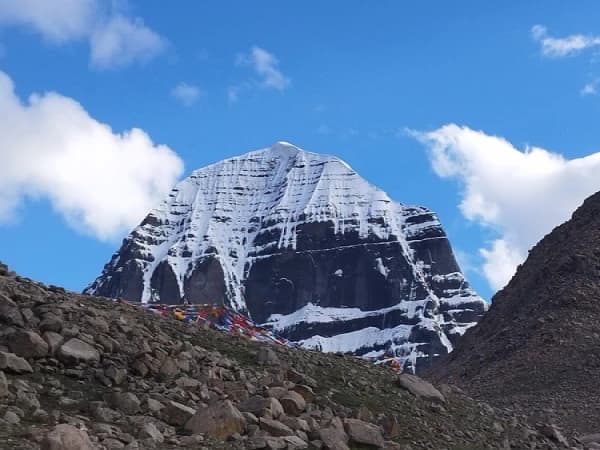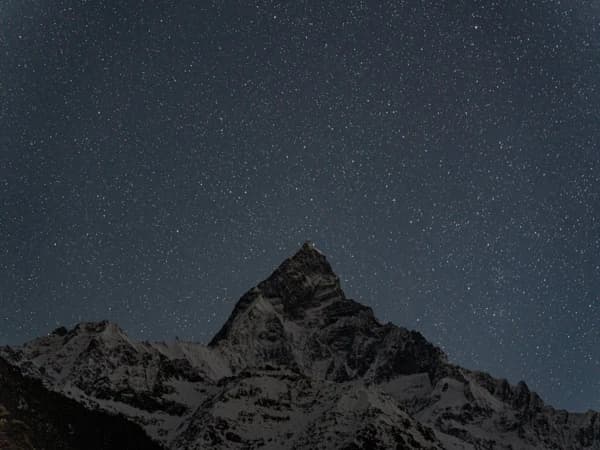The Upper Dolpo is the most untouched trekking destination in Nepal. This secluded region is adorned by the charming beauty of nature and culture and remains a mystic and mysterious destination in Nepal.
Upper Dolpo Trek Best Season
Upper Dolpo Trek Best Season
Dolpo is a mountainous region situated in the upper area of the Dolpa district of Nepal. Shey Phoksundo National Park covers some territory of the Dolpo region. This region is lagging behind with modernization.
The Upper Dolpo is the most untouched trekking destination in Nepal. Though the region is adorned by the charming beauty of nature and culture, it lacks infrastructure for development. The Nepal government has opened the route to foreigners since 1989. Therefore, accommodations are basic facilities. In the past, the trek used to be a camping trek. Over time, a few teahouses are available in the Dolpo region.

The Dolpo region is considered the restricted area in Nepal. Geographically, Upper Dolpo has arid terrains with hidden valleys. In order to preserve the cultural and natural resources, the Nepal government plays a vital role to control flooded tourism.
The adventurous journey to Upper Dolpo is an exciting trek in Nepal. This trek offers a lot from the spectacular views of mountain ranges to the sensational Tibetan culture. Trekking through alpine meadows into lavish forests is a marvelous experience. On the way, you come across lively people of different ethnic groups like Sherpa, Gurung, Rai, Limbu, and Tibetan.
As a whole, the Upper Dolpo Trek depicts Nepal’s diverse culture and topography. The quest through the trekking trails is worth experiencing.
Like many of the trekking trails in Nepal, the best time to visit Upper Dolpo is the spring (April to May) and the fall (October to November) when temperatures are pleasant, skies are the clearest, and there is minimal chance of snow at high altitudes.
Trek Overview
Destination: Nepal
Starting point: Juphal
Ending point: Juphal
Number of days: 20-30 Days
Maximum Altitude: 5,000 m approx.
Average trek per day: 6-8 hours
Best Season: Spring and Autumn
Region: Dolpo region
Difficulty: Strenuous
Accommodation: Teahouses | Tented Camp
Trek Style: Camping
Trek Highlights
- Scenic flight from Kathmandu to Terai to the Himalayas.
- Embrace the beauty of the deepest lake of Nepal - Shey Phoksundo.
- Many vantage points along the trek offer enchanting sunrise views.
- The spectacular view of Annapurna and Dhaulagiri range.
- Indulge in the culture of Bon and Buddhists.
- The warm and friendly hospitality of people.
- Come across several ancient gompas of the Dolpo region.
- Follow the trail across Kang La, Saldang La, and Jeng La pass.
Best Time To Trek Upper Dolpo
Spring and autumn are suitable times for the Upper Dolpo trek like any other trek in Nepal. However, It can be a hassle traveling during the early spring and late autumn due to unforeseeable snowfall.
The major part of the Dolpo is situated underneath the Dhaulagiri Himal Range. Consequently, the Dolpo region does not receive any rain even during the monsoon season.
Spring (March to May)
Spring is a superb time for traveling in the Dolpo region, especially in the lower region. Trekkings in the Upper Dolpo region can be inconvenient in the early spring due to snowfall. Mid-April to the end of May is the best time for the Upper Dolpo Trek. At this time, the weather is fair and stable. On a clear day, magnificent views of the Dhaulagiri ranges can be seen.
Autumn (September to November)
Autumn is also an exceptional time for the Upper Dolpo trek. However, the weather in the high mountains can be unpredictable. So, it's better to travel prepared just in case. Traveling during late November can be tough as the snow closes in. September and October are favorable months. The temperatures are moderate with clear skies.
Route to Upper Dolpo Trek
Upper Dolpo Trek is an arduous trek that takes long days to complete. This trek takes you to an untouched part of the Dolpo region through various old settlements.
The journey to the Upper Dolpo region begins with a flight from Kathmandu to Nepalgunj and follows the next flight to Juphal. Amusing terrains with the snowy Dhaulagiri and Annapurna ranges view make the flight pleasing. The trek starts for the first time from Juphal since the journey began. The hike follows the trail through a terraced field alongside the Bheri river. After a few hours' walk, you reach Dunai where you’ll spend the night.
The following day, the trek ascends into the Phoksundo River Valley, hiking across a lush green forest to reach Ankhe. Afterward, the quest continues to Sulighat trekking on a rocky trail through Ryajik. After spending a night in Sulighat, the trek follows the path to the juncture of the Phoksundo river and Pungmo river along the valley. Here onwards, the hike advances to Phoksundo lake (3,611 m). The alluring greenish-blue lake of Shey Phoksundo is breathtaking. As it has been a long journey, the day calls for acclimatization. On the rest day, you can explore the vicinity of the lake and visit the Tibetan Buddhist Monastery.
The trek follows the trail through pasturelands leading to Phoksundo Khola on continuing the journey. Hereafter, it guides you through a steep canyon all the way to Phoksundo Bhanjyang. Heading out of the Bhanjyang, the trail is a bit challenging comparatively. The trek guides you to Kang La Pass. The pass offers an outstanding view of Crystal Mountain, deserted valleys, and a U-shaped canyon.
Walking through the pasture lands of yaks and sheep, you arrive in Shey Gompa (4,500 m). There will be a rest day at Shey Gompa to adapt to the increasing altitude. On this day, it's recommended to explore around the Gompa. On the next morning, the trek proceeds to the top of Saldang La Pass. Then, you make your way down to Namduna Gaun for an overnight stay.
The trek continues to Saldang village with hours of ascending desert hills. Saldang village is enclosed by beautiful terraced fields. The trek resumes from Saldang village following the Nang Chu river to Yangtze village. In the village, you can visit the Yangtze region, Bon-Po monastery, and Panzang river. After leaving Yangtze village, the trek follows the route through Nishalgaon and Shimengaon. And thus reach Sibu.
The trek begins along the Nam Khong river the day after. Hiking with a great sight of yaks grazing in the field, the route guides you to the base of Jeng La pass (5,110 m). From the base, it is an uphill hike towards Jeng La Pass and a descent to Tarap valley later. Jeng La Pass offers awe-inspiring views of the Dhaulagiri massif. The trek halts in Tokyu village.
Moving further ahead, you head out of the Tokyu village to Dho Tarap. The trail to Dho Tarap is straightforward. This village is one of the settlements at the highest elevation in the world. The village will be the next place for acclimatization. There are gompas to explore around for the day.
The succeeding day is a descending hike through the juniper forest. The route leads you to the junction of Tarap Chu and Lang Khola and thus arrives in Tarap Khola. On moving further, you march alongside the gorge of Tarap Khola to reach Khanigaun. The next morning, you hike along the trail to Lalberi village and arrive in Tarakot. Tarakot used to be a castle and a popular hub for trading.
After leaving Tarakot, the trek advances following the Bheri river passing amid various villages, bridges, and gorges. Eventually, you reach the headquarters of Dolpa district - Dunai. The long journey finally ends after hiking to Juphal from Dunai. Here onwards, a flight takes you to Nepalgunj and further to Kathmandu.
Accommodation and Meals During Dolpo Trekking Package
Accommodation and Meals are the most basic in the Dolpo region. The trekking route to Upper Dolpo was opened for outsiders by the government after 1989. Therefore, the accommodation in this trek is in the developing phase. The Upper Dolpo Trek is a camping trek. So, you need to adjust to the remote facility. You spend your nights in a comfy two-men camping tent in the Dolpo region. A durable sleeping bag and clean mattress will be available in the tent. In recent years, few tea houses are built.
As for meals, authentic Nepali dishes are available in the Upper Dolpo trekking. Dal, Bhat, Tarkari, side dishes, bread, butter, and eggs along with other western foods, are the food items on the menu.
Permits required for Upper Dolpo trek
The Upper Dolpo Trek is an off-beaten trek. Three different permits are required for trekkings in the Dolpo region. As always, at least two or more groups of people are allowed for this trek. Therefore, single trekkers can acquire permits only via travel agencies.

The three essential permits required for the treks in Upper Dolpo are mentioned below:
- Lower Dolpo Restricted Area Entry Permit
- Shey Phoksundo National Park entry Permit
- Upper Dolpo Restricted Area Entry Permit
Trekking Gears and Equipment
The following lists are the essential gears and equipment essential for trekking:
- Trekking wears
- Waterproof and hardshell trousers
- Water and windproof jacket
- Down Jacket
- Gloves
- Hiking boot and crampon
- Ice ax
- Sunglasses, hat, or cap, sunscreen
- Headlamps
- Sleeping bag
- First Aid Box
- Route maps and tent
- Extra batteries and a power bank for your device
Upper Dolpa Trek Itinerary
Regulus Nepal organizes three trekking packages in the Dolpo region of Nepal. They are
How difficult is the Upper Dolpo trek?
The Upper Dolpo Trek is a long and strenuous trek at a higher altitude (more than 4,000 m). As the trek guides you to the elevation above 4,000 m, there is a high risk of altitude sickness. Due to this, acclimatization is a must for the convenient trek. This trek takes 24 days on average to complete. However, the duration can vary from itinerary to itinerary.
Like other popular trekking trails in Nepal, few teahouses are available in the upper Dolpo region. Camping tents are provided for your overnight stay as well. You need to adjust to the cozy accommodations along the trek. Overall, this trek is physically demanding yet offers exceptional natural mountain scenery.
FAQs
How long does it take to complete Upper Dolpo Trek?
In general, the Upper Dolpo Trek takes 20 days normally. However, the trek duration of the Upper Dolpo Trek varies from itinerary to itinerary. For instance, if you start the trek from Jomson, 26 to 30 days are required to complete the trek.
Where is Dolpo in Nepal?
Dolpo is situated in the Dolpa district of western Nepal. It covers Shey Phoksundo National Park to the borderland of Tibet.
How to get safe drinking water along the trek?
A few teahouses are available on the trek. You can buy safe drinking water from those tea houses. It is highly recommended to carry water purification pills if you are planning to join the Upper Dolpo trek. Besides, streams offer pure drinking water during the trek.
What is the tipping trend?
Tipping during the trek is not mandatory. Your appreciation and gratitude towards guides and porters are more than enough. If you’re willing to provide tips then you can tip based on your satisfaction along the trek.


